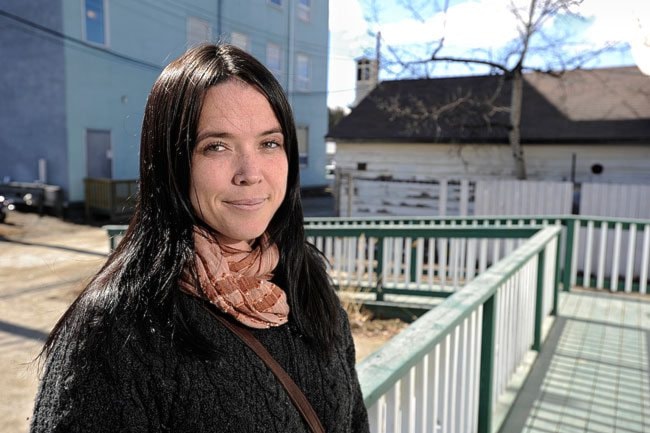Maggie Powter was born at home, assisted by a midwife.
Her sister had three homebirths, with midwives.
And Powter gave birth to her first two children at home, with midwives.
She is now 36 weeks pregnant, expecting to give birth next month.
She has planned to have her child at home, with a midwife.
“It was very normalized for me because of my family,” she said. “For a normal, uncomplicated pregnancy, I feel like it is a safer option. I didn’t want any interventions, I wanted a natural birth and, from reading I’ve done, I just know that the minute you walk into the hospital your chances of having interventions increase.” (Interventions can be anything from induction to painkillers to a C-section.)
But midwives in the territory aren’t regulated.
Yukon is one of only two regions in Canada that haven’t regulated the ancient profession, which dates back to biblical times.
Prince Edward Island is the other one. Nunavut and Newfoundland and Labrador are currently in the process of enacting regulations.
Without such rules, midwives have no hospital rights, meaning they cannot order tests like blood work and ultrasounds.
And, they are not covered by the health-care system.
It costs between $2,500 and $3,000 to hire a midwife in Yukon.
“But that’s nominal compared to the service you get,” said Powter, noting this covers all of the midwife’s supplies and her wage - including 24/7 on-call availability from the time of your first appointment to a minimum six weeks postpartum.
Powter’s midwife also makes homeopathic teas, creams and treatments for things like infections so she doesn’t have to take harsh antibiotics while pregnant.
“I would do whatever it is I’d have to do to be able to afford it,” she said. “For any pregnancy I would always recommend working with a midwife, it’s a different model of care. You spend more time with her, you discuss more with her, it’s not just medical, it’s not just numbers and measurements, it’s also emotions - how you’re feeling, how your partner’s feeling physically and emotionally. It’s just a more holistic model of care”
A relationship develops between the woman and her midwife, said Christina Kaiser, who has been working, unregulated, in the territory since 2000. She is one of only two midwives currently working in Yukon.
She compares the usual five to 15-minute, prenatal appointments with doctors to the hour-long ones with a midwife.
If she were regulated, Kaiser would be a part of the system, not working from outside.
And so she would probably have more ground to stand on, especially when it comes to hospital rights, she said.
But she is worried regulations may restrict her.
There are several regulations midwives in other regions face that Kaiser doesn’t agree with, like the rule against delivering twins at home, she said.
Kaiser has six of her own children, two of whom were twins delivered at home.
“I don’t have to put any restrictions on things,” she said. “I do whatever I’m comfortable with and what my clients are comfortable with and, if I wasn’t comfortable with the situation, then I will say that.”
Kathleen Cranfield is also a midwife.
She has worked in Ontario, British Columbia, the Northwest Territories and she will soon be working in Quebec, where regulated midwives have their own clinics.
She agrees that midwifery is all about doing what the woman wants, so long as it’s safe.
“Informed choice is a midwife’s motto,” she said.
But Cranfield supports regulations.
“I do not think it will minimize anyone’s choices, but I think it is going to give more women the access to making choices,” she said. “It will expand the clientele. It will document more cases. It will spread knowledge and education. It will make it so that every woman has access to choice.”
There are women in the territory who know what they want and will seek out a midwife, said Cranfield. But there are also many women who may not even know what a midwife is, and may not be able to afford it, but could really benefit from it, she said.
There is no guarantee regulating midwifery will mean funding, but it is a priority in the Yukon, said Cranfield.
At this time last year, the territorial government consulted with the public and stakeholders about regulations.
The department has no idea when a decision will be made, but has confirmed if regulations are drafted, midwives currently working in the territory will have “a lot” of involvement.
Saturday, Cranfield is organizing a walk around millennium trail, starting at the S.S. Klondike at 11 a.m. to raise awareness of midwifery in the territory and is part of a worldwide, walking initiative to show support for midwifery.
Powter isn’t sure if she does, or does not, support regulations, but her No. 1 wish is that more women have access to a midwife, she said.
She will be walking on Saturday, she added.
Contact Roxanne Stasyszyn at
roxannes@yukon-news.com
